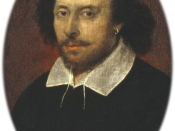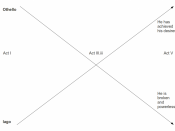Throughout time theatre has evolved and underwent so many metamorphosis that it is almost impossible to compare and discuss Tragedy as a theatre form in one essay. I have chosen to compare 20th Century Tragedy with Elizabethan Tragedy and how they vary from each other and even where they are the same in some areas.
Renaissance drama developed in England during the reign of Elizabeth I in the latter part of the 16th century. Some academic neoclassical tragedies and comedies were being written and performed at the universities, but most Elizabethan poets tended to ignore neoclassicism or use it selectively. English drama drew on popular forms, a vital medieval theater, and the demands of a popular audience. Under the influence of England's changing political and economic status and the evolution of a fresh language, such playwrights as Thomas Kyd and Christopher Marlowe gave birth to the epic, dynamic, unrestrained drama that culminated in the diverse and complex work of English theater's greatest genius, William Shakespeare.
The plays used a classical act and scene structure, employed verse (although often mixed with prose). The subjects of tragedy tended to be historical rather than mythical, and the history was often used to make a contemporary point.
Plays were presented during the warmer months in circular, open-air public theaters. The acting style for the early Elizabethan plays was heroic and exaggerated like the plays themselves, but by Shakespeare's time such actors were changing to a more restrained, natural style, as reflected in the famous speech to the players in Shakespeare's Hamlet. Scenery was minimal, consisting of little more than a few props or set pieces. The settings were probably created more vividly in the minds of the spectators by the suggestive, descriptive poetry of the plays.
Modern English drama not only came into being...


